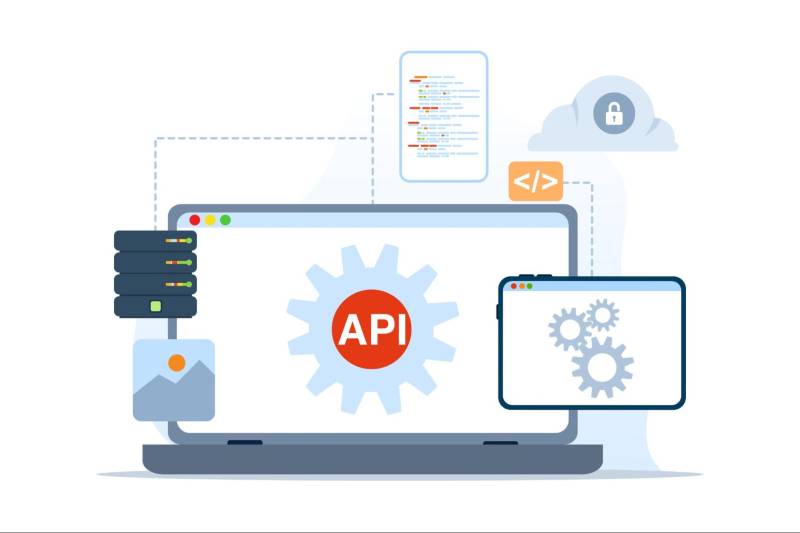Web development is more dynamic and interconnected than ever, thanks to Application Programming Interfaces (APIs). APIs empower developers to fetch data from external sources, connect disparate systems, and build feature-rich web applications with ease. Let’s dive into what APIs are, why they’re essential, and how to use them effectively in your web development projects.
What is an API?
APIs are the unsung heroes of modern technology, making the internet as interconnected as it is today.
The Definition of API
An Application Programming Interface (API) is a set of rules and protocols that allows one application to interact with another. Think of it as a translator that lets your software "talk" to external systems and retrieve data.
How APIs Work
APIs work through requests and responses. A client (your app) sends a request to an external server (API provider), and the server responds with the requested data. This interaction typically uses HTTP protocols, making it accessible via the web.
Why Are APIs Important in Web Development?
APIs are more than just tools; they’re enablers of innovation in web development.
Enabling Seamless Communication Between Systems
APIs allow different applications and platforms to communicate effortlessly, enabling functionalities like social media logins, payment gateways, and live data feeds.
Automating Repetitive Tasks
Why reinvent the wheel? APIs let developers reuse existing solutions, automating tasks like sending emails or fetching stock prices.
Access to Real-Time Data
Need live weather updates or the latest sports scores? APIs provide instant access to up-to-date information from external sources.

Types of APIs
APIs come in various forms, each suited to specific use cases.
Open APIs
Also known as public APIs, these are accessible by anyone and commonly used for public-facing apps like Google Maps or Twitter.
Partner APIs
Restricted to authorized users, these APIs facilitate partnerships, such as third-party tools integrating with payment systems like PayPal.
Internal APIs
Used within an organization, internal APIs enable communication between internal systems for enhanced efficiency.
Composite APIs
These combine multiple APIs into one call, making them ideal for complex processes that require data from multiple sources.
Key Components of an API
Understanding the anatomy of an API is essential for effective integration.
Endpoints and Routes
Endpoints are specific URLs where the API can be accessed, while routes define the type of data or functionality available.
Requests and Responses
The client sends a request (e.g., GET for fetching data), and the server responds with data, usually in JSON or XML format.
Authentication and Authorization
APIs often require credentials like API keys or tokens to verify and secure access.
How to Fetch Data from External Sources Using APIs
Fetching data using an API might sound technical, but it’s simpler than you think.
Understanding HTTP Methods (GET, POST, PUT, DELETE)
GET: Retrieves data.
POST: Submits new data.
PUT: Updates existing data.
DELETE: Removes data.
Exploring API Documentation
API documentation is your roadmap. It outlines how to interact with the API, including endpoints, required parameters, and example requests.
Setting Up an API Key
Most APIs require an API key for authentication. This unique key identifies your app and ensures secure access.
Sending a Request to the API
Use tools like Postman or code libraries (e.g., Axios) to send a request and retrieve data.
Tools and Libraries for Working with APIs
Simplify your workflow with these handy tools and libraries.
Using Postman for API Testing
Postman is a versatile tool for testing APIs, allowing you to send requests, view responses, and debug issues.
Popular JavaScript Libraries for API Requests
Axios
A promise-based library that simplifies API requests with built-in error handling.
Fetch API
A modern, native JavaScript method for making HTTP requests.
jQuery AJAX
An older but still reliable method for fetching data using jQuery.
Common Challenges and How to Overcome Them
Handling API Rate Limits
APIs often limit the number of requests per minute. Use caching or optimize requests to avoid hitting these limits.
Dealing with CORS Issues
Cross-Origin Resource Sharing (CORS) errors occur when a browser blocks API requests from unknown sources. Solutions include server-side proxies or modifying CORS settings.
Managing Errors and Timeouts
Implement error handling to manage scenarios like slow responses or invalid requests.
Conclusion
APIs are the lifeblood of modern web development, enabling seamless integration with external data sources and systems. By mastering the basics of APIs, developers can build dynamic, data-driven applications that enhance user experiences. Start exploring APIs today, and unlock a world of possibilities for your web projects.









